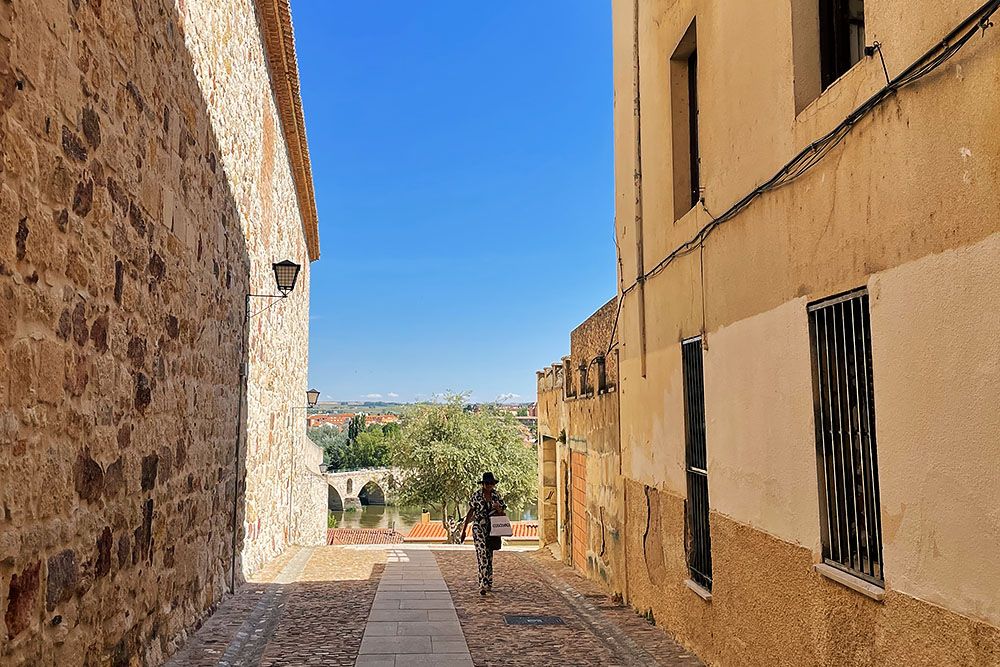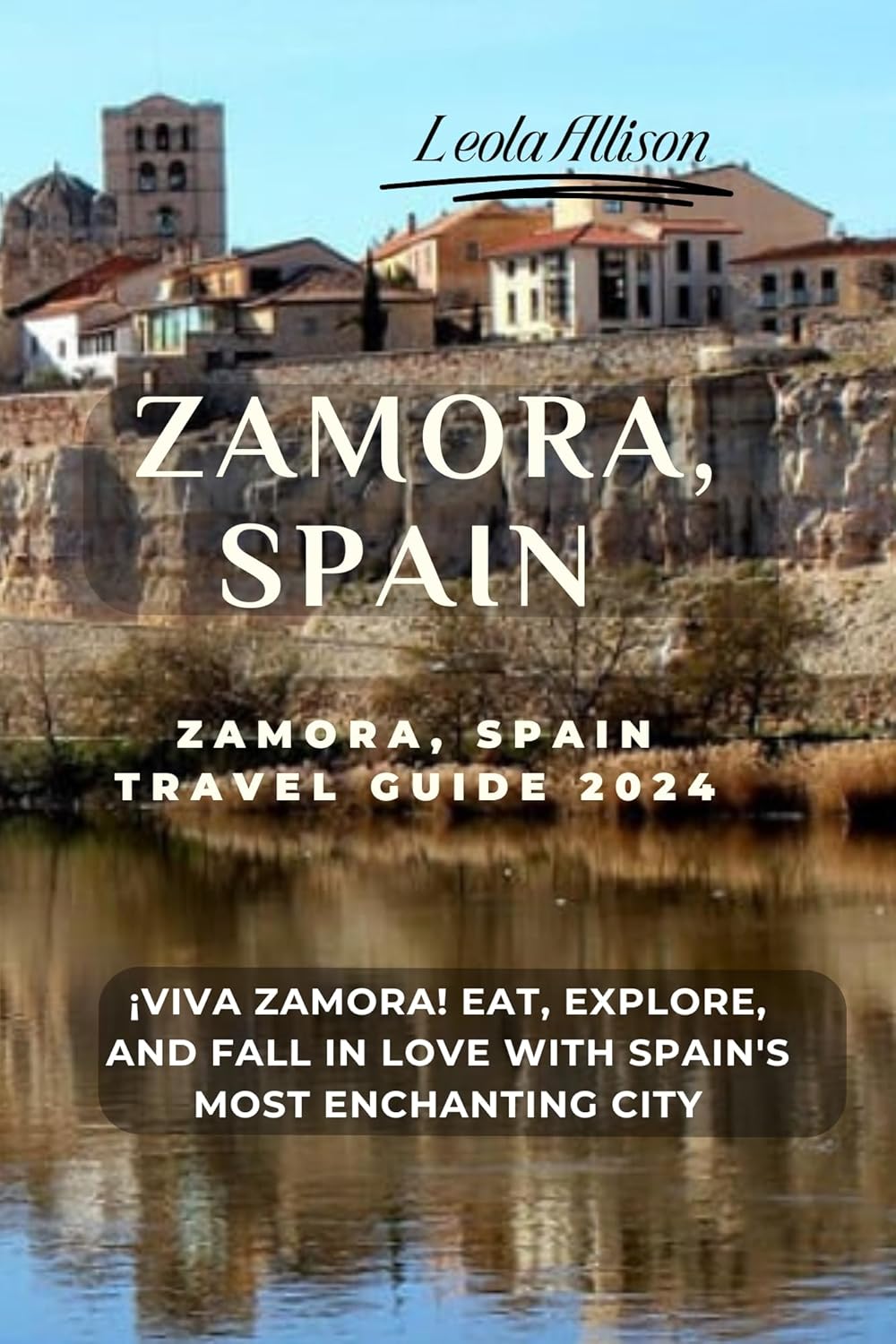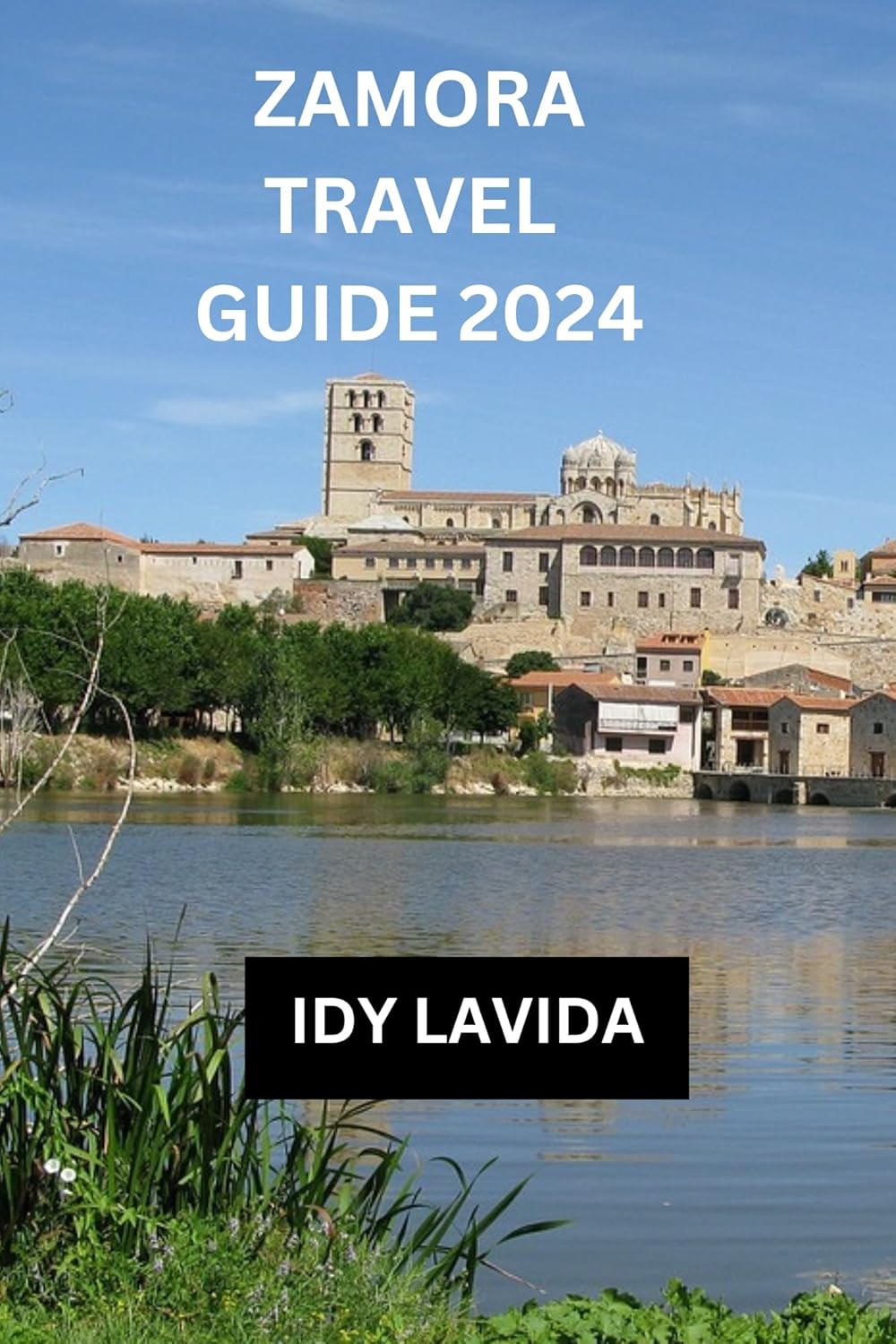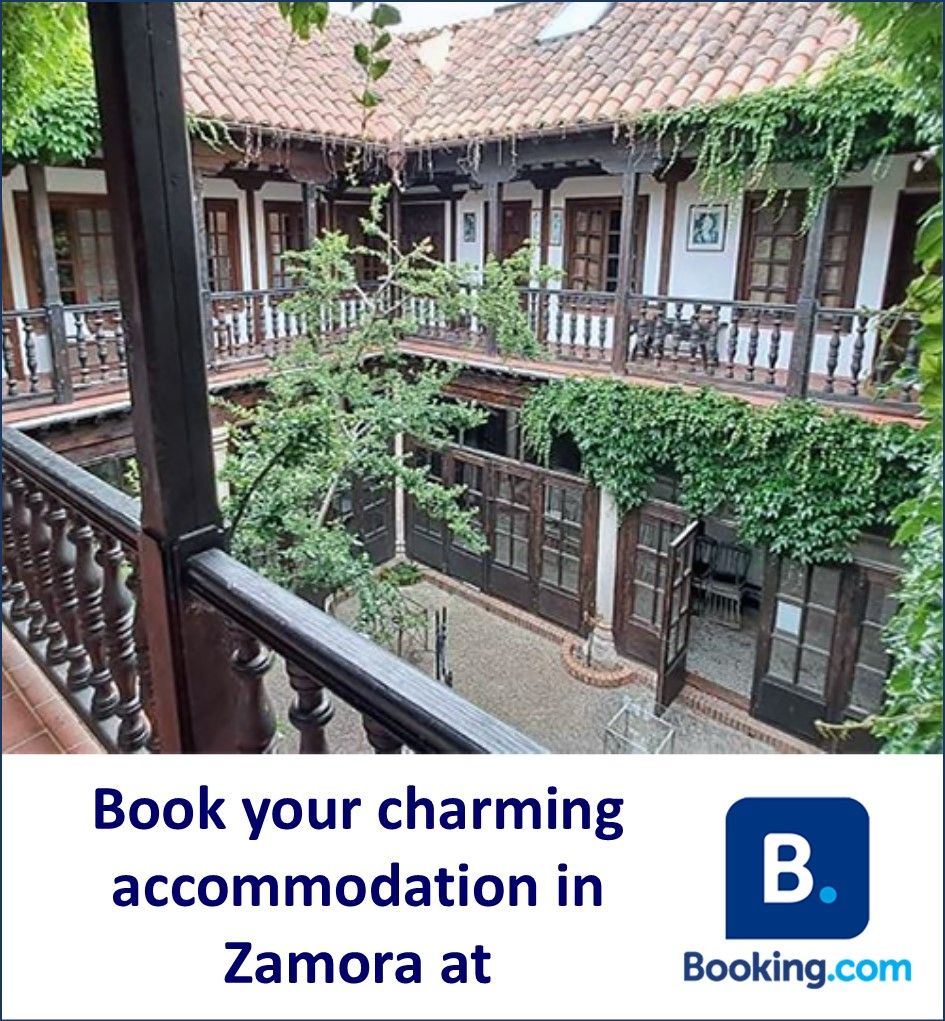In May, we were on a wine trip in the western part of Castile and León. This largest autonomous region of Spain is considerably less known among tourists than regions such as Andalusia, the Basque Country, and Catalonia. Nevertheless, the region has much to offer for avid Spain-goers. Think of stunning nature, picturesque vineyards, and beautiful historic cities. One of those cities is Zamora, the delightfully tranquil capital of the eponymous province. During our wine trip, we visited this city, and we were glad we did! The surprisingly green Zamora is one of the most important cities in the world for Romanesque architecture and history.
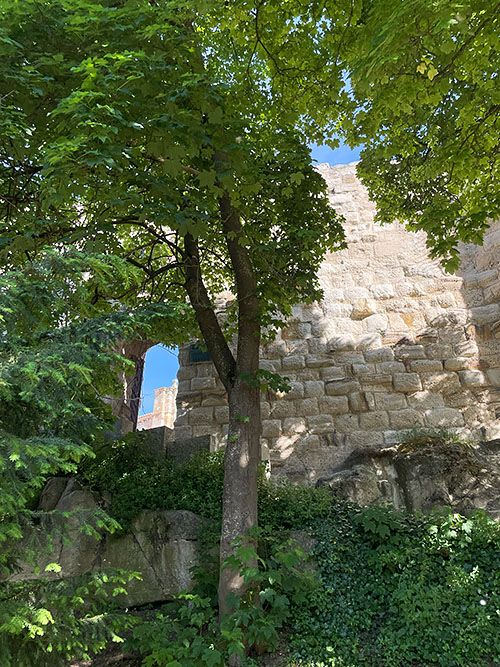
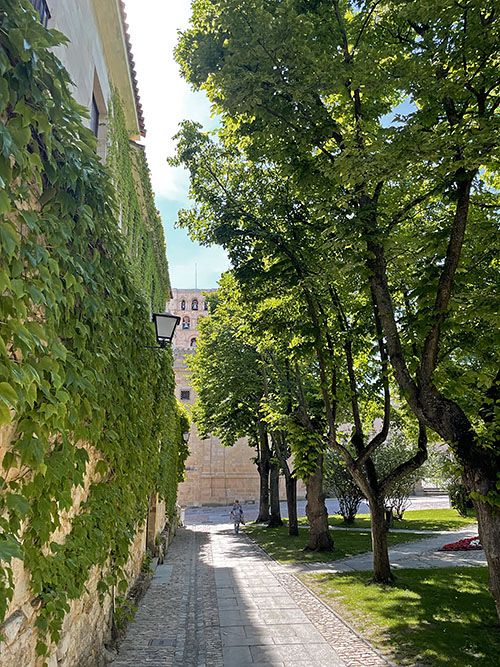
Brief history of Zamora
Zamora was founded in the Bronze Age and later occupied by the Celts during the Iron Age. Under Roman rule, the area known as “Semure” was part of the Roman region of Hispania Tarraconensis.
After the Arab conquest in the 8th century, Alfonso I of Asturias reclaimed the city. In the 10th century, Zamora became a strategic defensive position for Christians in their struggle to reclaim the Iberian Peninsula. Until the 11th century, the city changed hands several times. This turbulent history has left an indelible mark on the architecture and character of Zamora.
The 12th century was the most powerful period for Zamora. During this time, the city saw the construction of many churches and other fine buildings. Subsequently, Zamora became a city marked by battles and conflicts, after which it gradually became less significant in Spain. The city’s history is still clearly visible in its impressive stone walls, Roman bridges, defensive towers, and Romanesque churches.
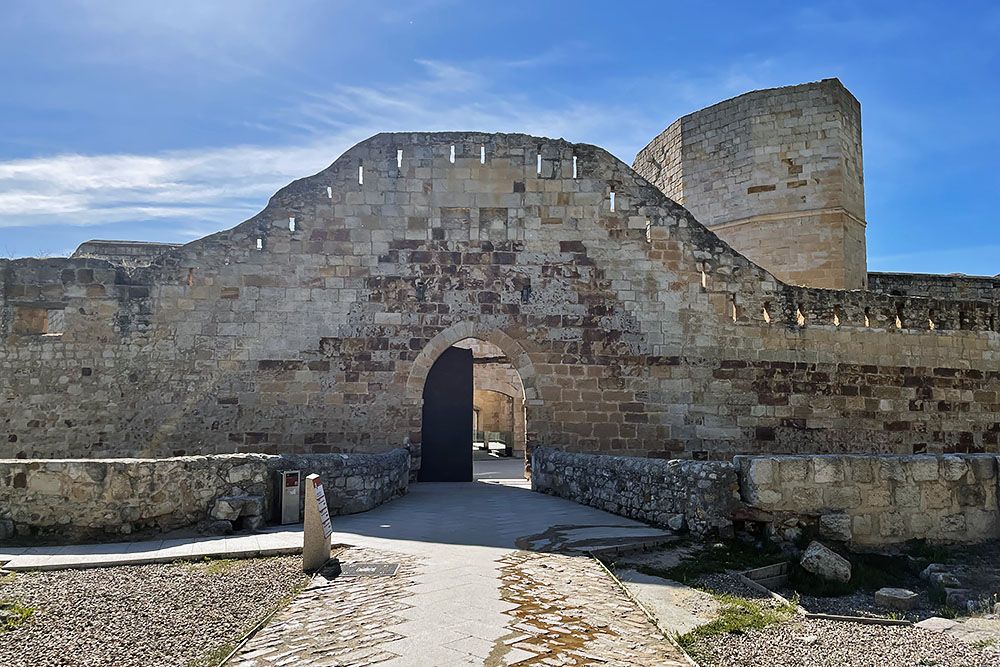
Highlights of Zamora
Zamora is the city of Romanesque architecture and art. Along the picturesque streets, you will find an abundance of 12th and 13th-century churches, cathedrals, and public buildings. They exhibit the characteristic Romanesque style of thick stone walls, rounded arches, and intricate wood carvings.
The jewel of Zamora’s Romanesque heritage is the cathedral. However, the city has more than just Romanesque gems to offer. Here are the sights we believe you shouldn’t miss when in Zamora:
Catedral de El Salvador
The cathedral of Zamora is located in the heart of the old town. This beautiful example of Romanesque architecture was built in the 12th and 13th centuries. The Gothic and Baroque elements you see here were added later.
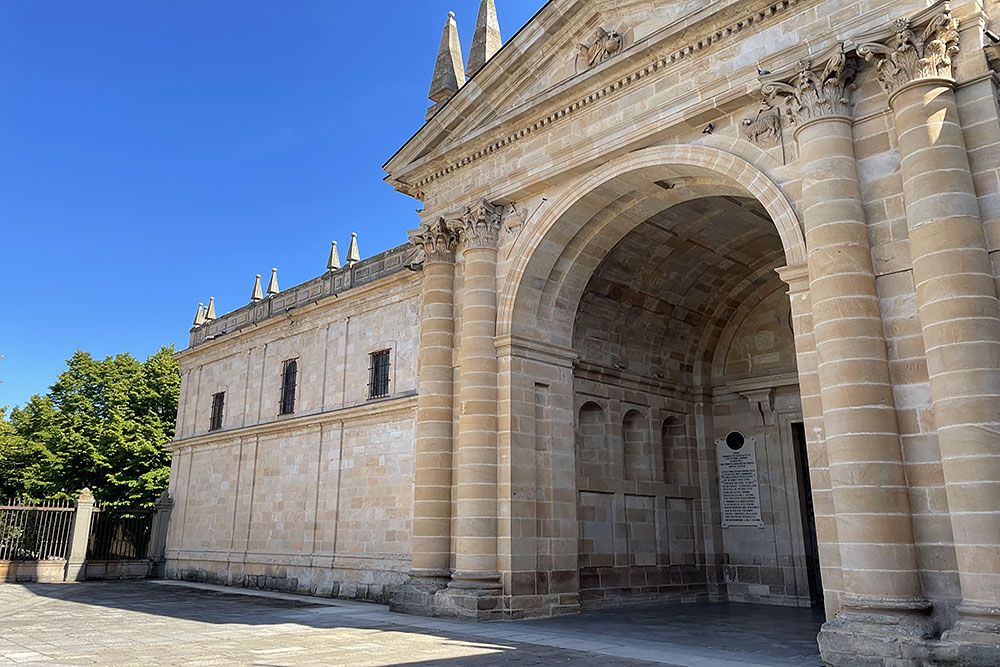
One of the unique architectural features is the large dome that covers the central space. This dome, with a diameter of 20 meters, is one of the largest in Spain and offers breathtaking views. The façade is adorned with stunning sculptures and reliefs depicting religious scenes. The interior is richly decorated with altars and artworks.
The cathedral of Zamora is not only an important religious centre but also a symbol of the city’s rich history and culture. It is the seat of the Diocese of Zamora and plays a central role in the region’s religious celebrations and festivals, such as Holy Week. The cathedral attracts thousands of visitors and pilgrims each year who wish to experience the beauty and spirituality of the building.
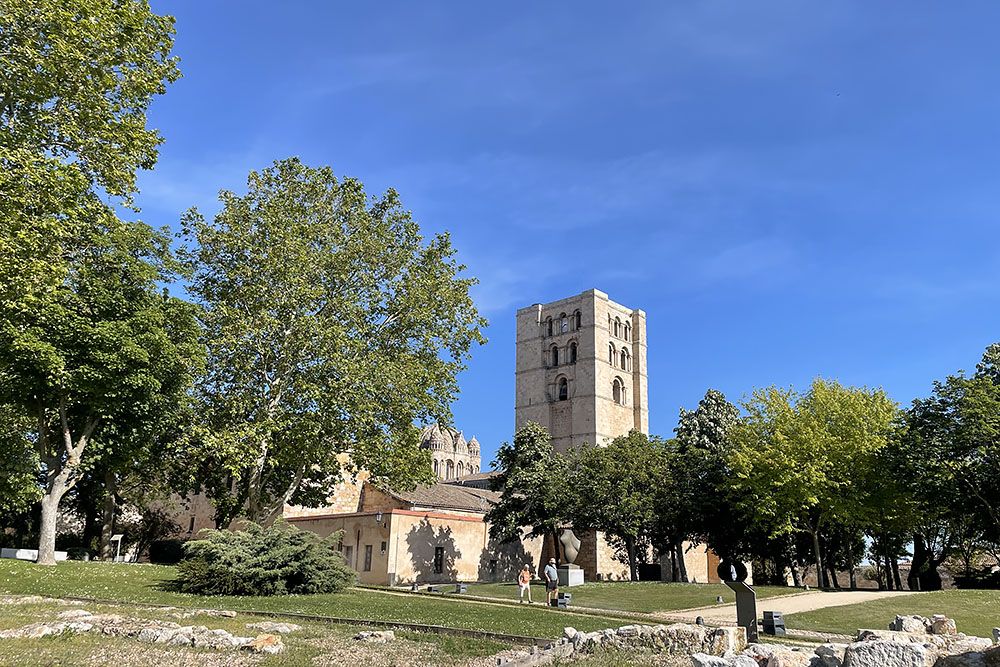
Puerta del Obispo (Bishop’s Gate)
This iconic 12th-century gate is a perfect starting point for your city walk through Zamora. The Romanesque entrance to the city is named after the Bishop of Zamora, who played an important role in the city’s and region’s history. Puerta del Obispo is decorated with beautiful sculptures and reliefs depicting religious and mythological themes. The sturdy stone construction and imposing arches give the gate a majestic appearance.
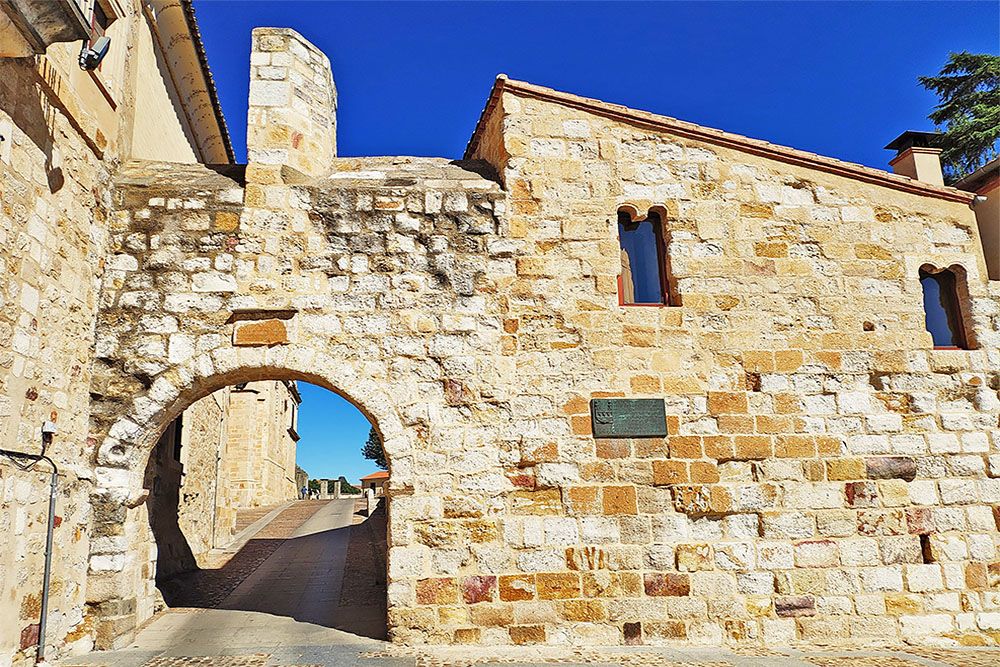
Castle of Zamora
Situated at the highest point of the city is the Castle of Zamora. This impressive historical monument dates back to the 11th century and was built during the Reconquista. It served as a strategic defensive point against attacks from the Moors and played an important role in the military history of the region.
The castle is a splendid example of medieval military architecture. The sturdy walls, towers, and imposing gatehouse have been well preserved, reflecting the strength and function of the castle in its heyday. The round towers also provide stunning views over the city and its surroundings.
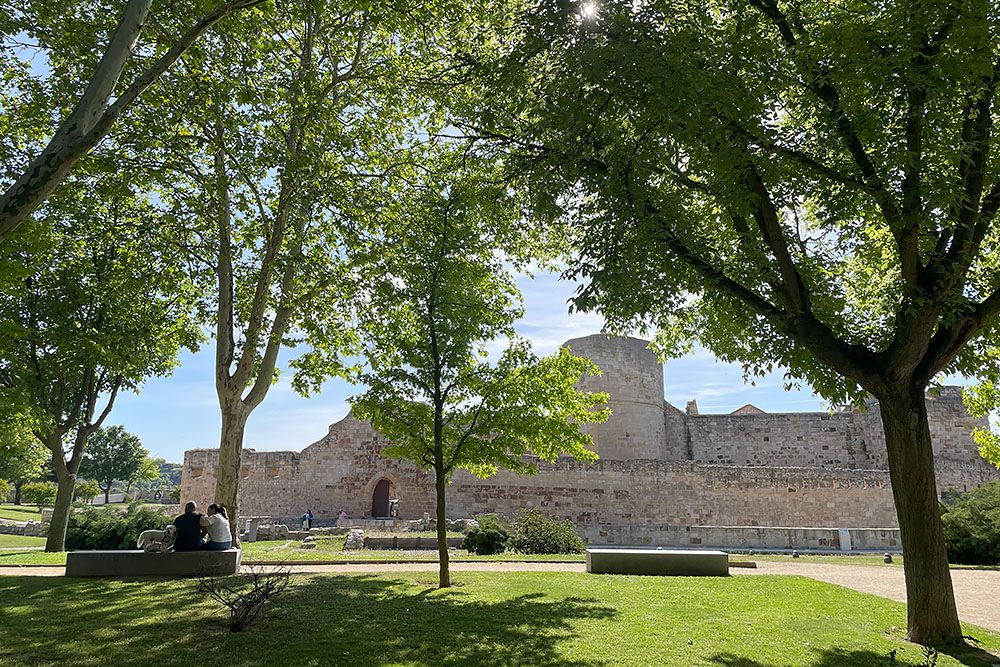
Puente de Piedra
The Puente de Piedra (the ‘Stone Bridge’) is one of the most iconic landmarks of the historic city. This beautiful Romanesque bridge from the 12th century consists of sixteen oval arches that elegantly span the river. Over the centuries, the Puente de Piedra has played a crucial role in the history of Zamora. The bridge was often the scene of struggles for control over this strategic location. For many years, it served as the only way to cross the river, making it an important transport point for livestock, food, and people.
From the pedestrian bridge, you can enjoy a stunning view of Zamora’s medieval walls, palaces, and churches. It is an ideal spot for photography, especially at sunset. The setting sun beautifully reflects in the water, casting a golden glow on the stone buildings.
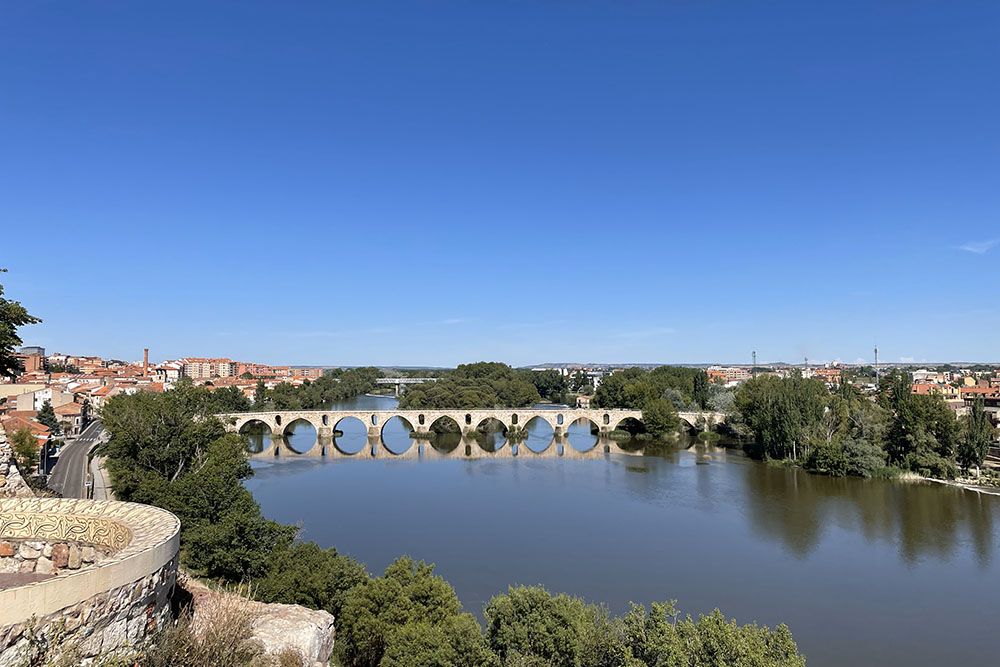
Plaza Mayor
Plaza Mayor is the heart of the city. This lively square dates back to the 16th century and is a splendid example of Spanish Renaissance architecture. The square is characterised by its elegant arcades, providing much-needed shade on a sunny, warm day. The buildings surrounding the square house various cafés, restaurants, and shops, making it a popular meeting place.
The square is not only a place to relax and enjoy delicious tapas and a drink; it is also a centre for events and festivities. Throughout the year, various markets, concerts, and cultural activities are organised here. For instance, impressive processions take place during Semana Santa (Holy Week).
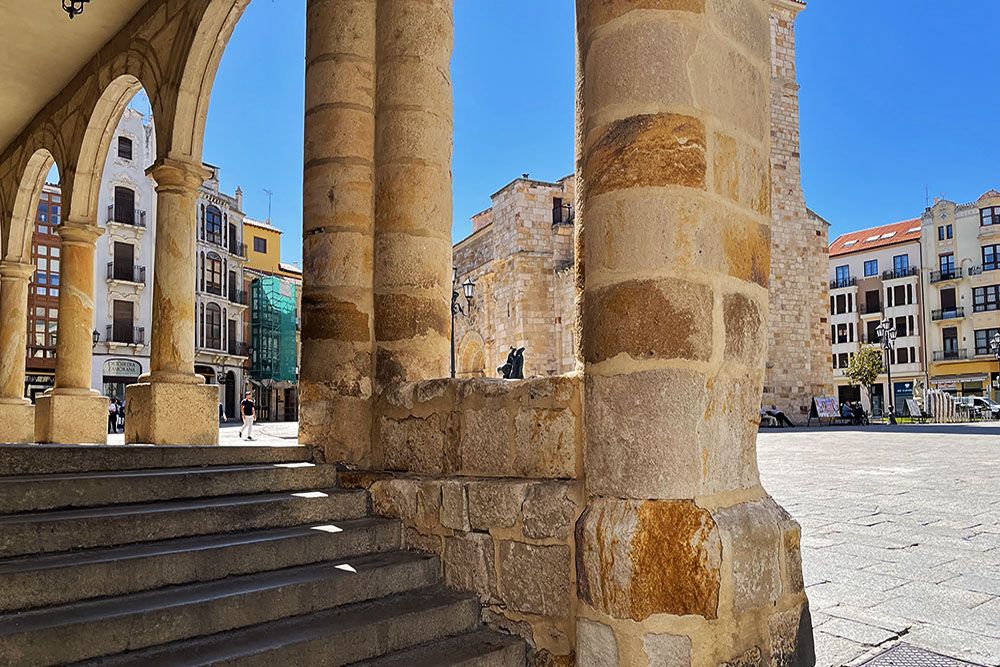
The many Romanesque churches
Zamora is renowned for its numerous Romanesque churches, with more than 20 dating from the 11th to the 13th centuries. One of the notable churches is the Iglesia de la Magdalena. This church, from the second half of the 12th century, is perhaps the most beautiful Romanesque church in the city. La Magdalena is known for its elegance, decorative elements, and stunning apse. The interior features a unique example of Romanesque funerary art from the 12th century.
Another church worth visiting is that of San Pedro y San Ildefonso. It is the largest church in Zamora after the cathedral. Built between the 11th and 18th centuries, the church has undergone various renovations over the years, resulting in the loss of much of its original Romanesque design. The church houses the relics of San Ildefonso and San Atilano, which have been guarded for centuries by the Real Cofradía de Caballeros Cubiculario: a royal and very ancient brotherhood.
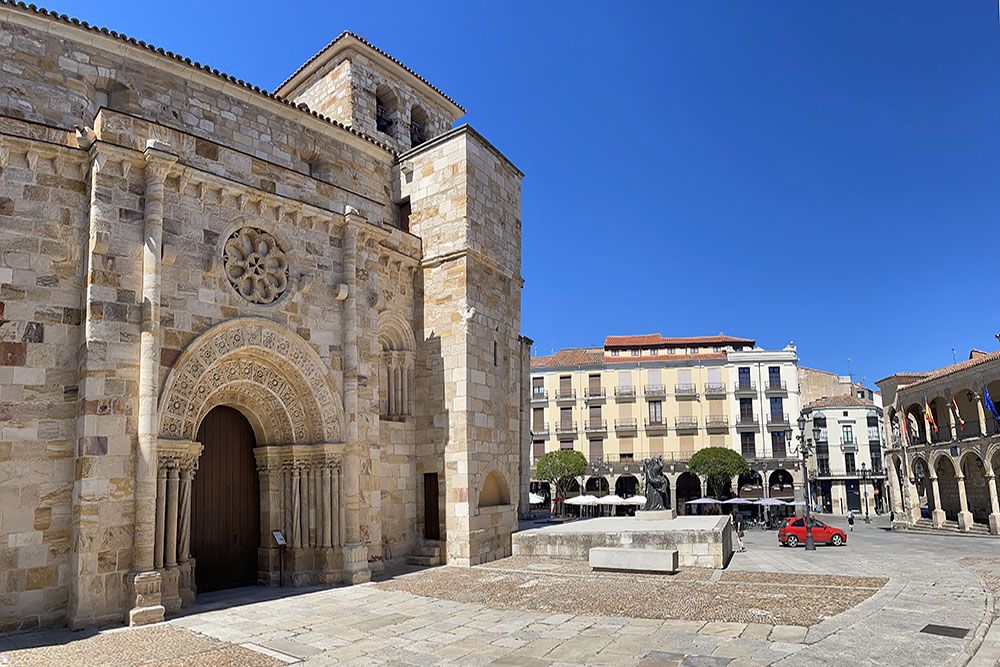
Aceñas de Olivares
The Aceñas de Olivares are medieval watermills located on the banks of the River Duero. These mills were primarily used for grinding grain and are a testament to the ingenious techniques employed at that time to harness natural resources. The mills feature large waterwheels powered by the river’s current, making them not only functional but also beautiful to behold, especially in conjunction with the surrounding natural landscape.
Mirador del Troncoso
Mirador del Troncoso is a stunning viewpoint just outside the city centre of Zamora. From here, you have a panoramic view of the city, with its impressive cathedral and medieval architecture, as well as the majestic River Duero and the surrounding landscape. You can reach the viewpoint by car or on foot.

Celebration of Semana Santa in Zamora
Semana Santa (Holy Week) is one of the most important and impressive religious celebrations in Spain, particularly in the city of Zamora. This annual event commemorates the passion, death, and resurrection of Jesus Christ. Each year, thousands of visitors from around the world come to Zamora for Semana Santa. The celebrations are not only religious in nature but also culturally and historically significant.
The origins of Semana Santa in Zamora date back to the 13th century. The oldest brotherhood, La Santa Vera Cruz, was established in the 14th century. Over the centuries, various brotherhoods and cofradías (religious brotherhoods) have emerged, each developing their own processions and traditions.
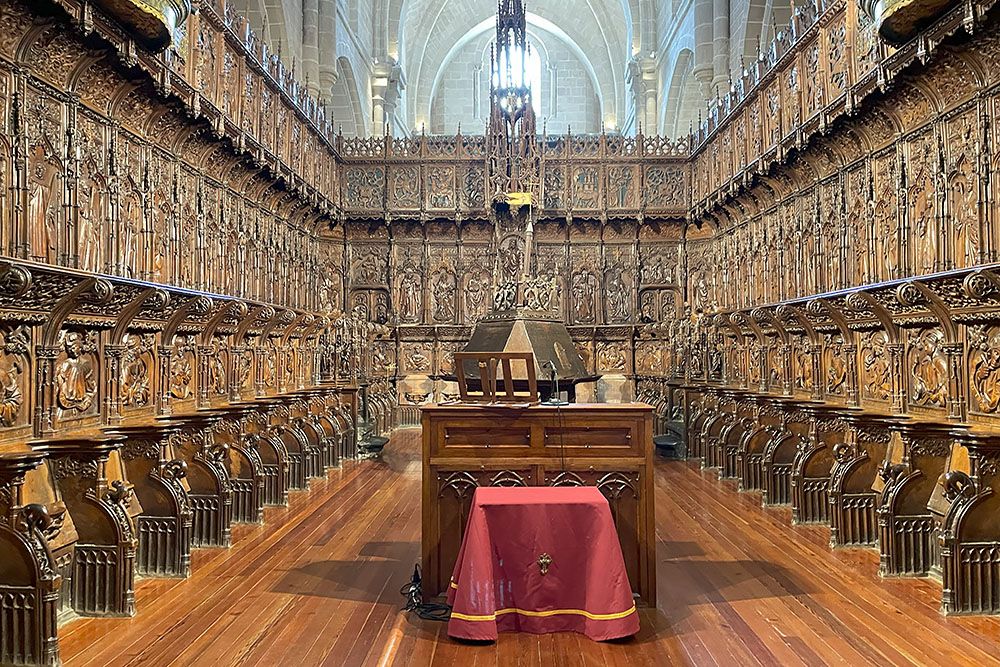
Processions during Holy Week
Zamora has 16 active brotherhoods. During the processions, members wear their own unique robes. The processions begin on Palm Sunday and conclude on Easter Sunday, with impressive parades each day.
Members of the brotherhoods, often dressed in long, conical hats (caperuzos) and robes, walk through the streets of the city in a quiet and meditative atmosphere. The processions involve carrying large, artistic statues on a so-called paso (processional platform). These statues are often created by famous Spanish artists. The pasos are carried on the shoulders of the cargadores (bearers), who proudly and devotedly transport the heavy loads through the streets of Zamora.
The atmosphere during Semana Santa in Zamora is unique. The nighttime processions are often silent and serene, with only the sound of drums and the soft strains of music accompanying the parades. The daytime processions are livelier, filled with music and light that fill the streets. A frequently heard melody is the funeral march by Thalberg, which is considered the unofficial anthem of Zamora.
We visited Zamora at the end of May, well after Holy Week, so we were unable to attend the processions. However, we did admire the impressive statues displayed in the cathedral of Zamora.
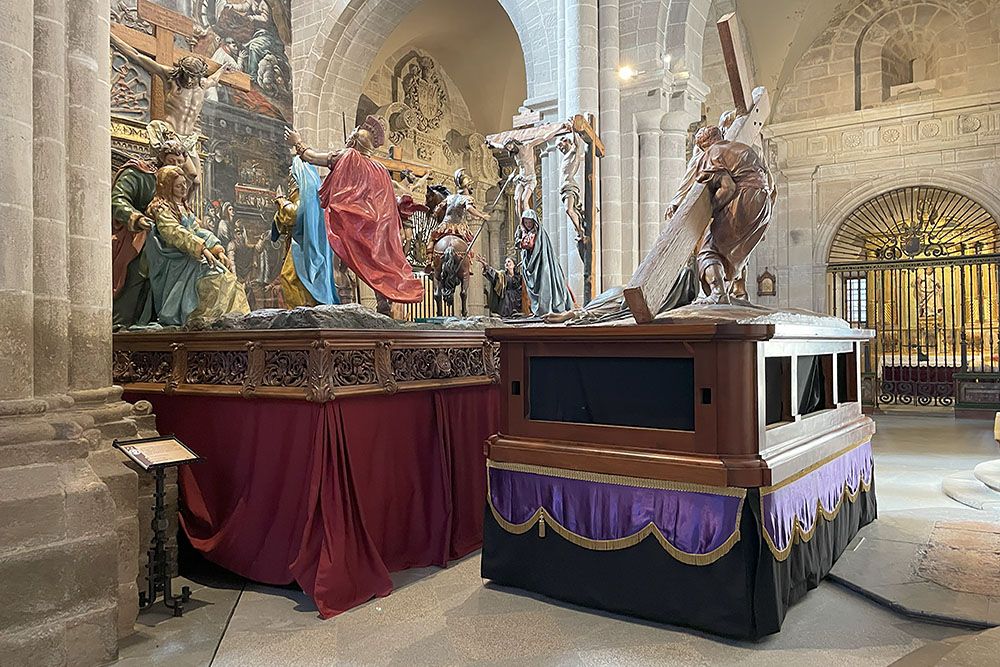
What to see and do in the surroundings of Zamora
The area around Zamora is ideal for outdoor activities such as hiking, cycling, and kayaking. There are numerous well-marked paths that wind through picturesque villages, vast fields, and along the River Duero. The nearby natural parks, such as the Parque Natural de las Arribes del Duero, offer stunning views and rich biodiversity. We will publish a separate blog on this travel blog about the outdoor opportunities in this part of Spain.
Zamora also serves as an excellent base for day trips to the beautiful cities of Salamanca, Valladolid, and the slightly further afield León. You can also visit the nearby picturesque village of Fermoselle or the medieval town of Toro. We found Toro so special that we dedicated a blog to it on this website.
Finally, the area around Zamora is particularly known for its vineyards and the many excellent wines that come from there. In a separate blog about the wine routes in Zamora, we’ll delve into it extensively.
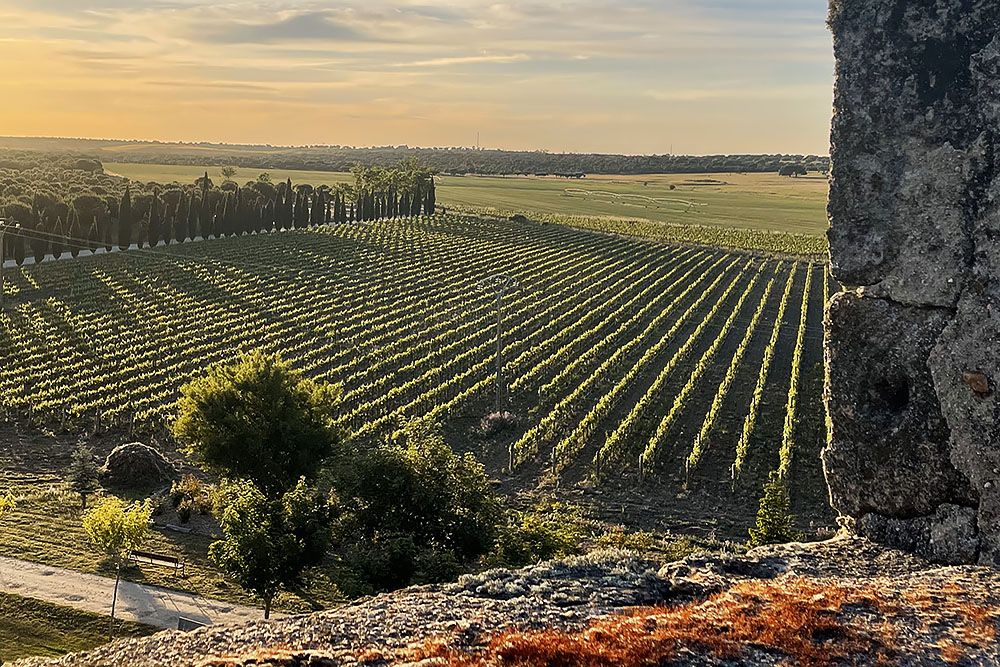
Practical tips for a city trip to Zamora
Zamora is situated in the northwest of Spain, in the autonomous region of Castile and León. The city lies on the banks of the River Duero, close to the border with Portugal. Zamora is approximately 100 kilometres west of the city of Salamanca.
The most efficient way to reach Zamora is to fly to Madrid and then take the high-speed train (AVE) to Zamora. The journey takes just an hour and twenty minutes, offering a good balance of speed and comfort. If you are using Zamora as a base for a wine trip in the region, you can easily hire a car at the Zamora train station.
Zamora is rich in historical and cultural attractions. Here are some of the key sights you should not miss during your visit to the city:
- Cathedral of Zamora (La Catedral de El Salvador): This impressive cathedral dates back to the 12th century and is famous for its Romanesque architecture. The cathedral features a unique dome and houses a museum with silverware and Flemish tapestries.
- Castle of Zamora: Located at the highest point of the city, the ruins of this castle offer stunning views. Stroll through the castle gardens and admire the artworks of local artist Baltasar Lobo.
- Puente de Piedra: This historic stone bridge over the River Duero has 16 arches and is one of the most iconic symbols of the city. A walk across the bridge provides a lovely view of Zamora and its city walls.
- Plaza Mayor: The central square of Zamora, surrounded by beautiful buildings such as the old and new town halls and the Romanesque church of San Juan de Puerta Nueva. It is an ideal place to relax with a drink or tapas.
- Romanesque Churches: Zamora is known for its many Romanesque churches, with over 20 examples from the 11th to the 13th centuries. Notable churches include Iglesia de la Magdalena, San Pedro y San Ildefonso, and Santa María la Nueva.
- Museo de Semana Santa: This museum provides insight into the rich traditions of Holy Week (Semana Santa) in Zamora, featuring beautiful processional statues and information about local celebrations.
- Aceñas de Olivares: A group of well-restored watermills on the River Duero, where you can learn about traditional milling methods. You also have the opportunity to cross the river by boat.
- Mirador del Troncoso: This viewpoint offers a stunning panoramic view of the River Duero and the city, making it a great spot for photos.
Zamora is known for its rich history, Romanesque architecture, and beautiful natural landscapes. The region is also famous for wine production. Through the Ruta del Vino de Zamora, you can taste local wines and learn more about the winemaking traditions in the area.
The best seasons for a city trip to Zamora are spring (March to June) and autumn (September to November). During these times, temperatures are milder, and there are fewer crowds than in summer. Additionally, Holy Week (Semana Santa) takes place in spring, renowned for its impressive processions and cultural significance. In autumn, there are often local festivals and events celebrating the culture and traditions of the region.
Here are some well-reviewed accommodations in Zamora, ranging from hotels to guesthouses and B&Bs:
- Parador de Zamora: Located in a 15th-century castle in the historic centre of Zamora, this hotel offers luxurious rooms, a restaurant serving traditional Castilian dishes, and an outdoor pool.
- Casa Mara: A cosy B&B situated 1.8 km from the Zamora Castle Park, offering comfortable rooms with air conditioning and a terrace.
- Infinium Zamora Suites: This hotel is an eight-minute walk from Playa Los Angeles and offers non-smoking rooms, free Wi-Fi, and a bar.
- Casa Dora Duero: Offers views of the city and is close to key attractions such as the Cathedral of Zamora.
Other accommodation options in Zamora.
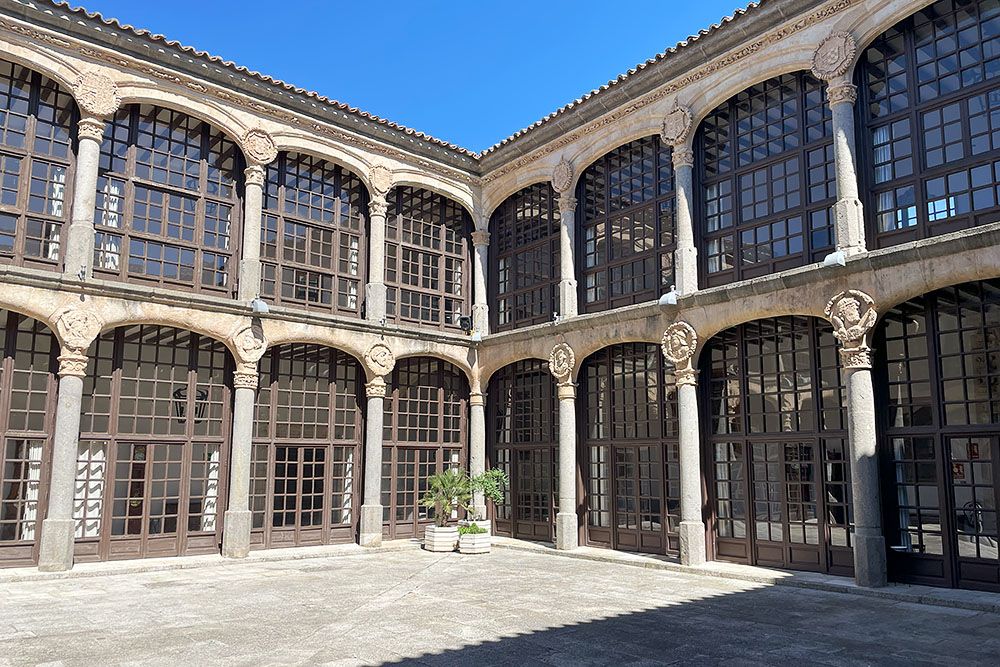
Parador de Zamora
Zamora is known for its delicious tapas, or "pinchos" as they are locally called. In the historic city centre, there are plenty of eateries where you can enjoy the tastiest pinchos. Additionally, you can find delightful meals at the following establishments:
- La Abacería: This restaurant offers a selection of local dishes and wines from the region around Zamora.
- Ágape: A popular spot for tasting various tapas in a friendly atmosphere.
- La Rúa: This restaurant serves traditional dishes from Zamora and is known for its authentic flavours.
- Bar El Lobo: A cosy tapas bar with a wide variety of tapas.
- Sancho 2: This restaurant combines local traditions with international culinary trends.
- Restaurante Paris: Known for its fresh seafood and a varied menu of traditional and international dishes.
- Bar Los Abuelos I: A small, charming tapas bar with an excellent selection of tapas, including squid and chicken.
- La Oronja Bar & Restaurante: This restaurant offers an elegant setting and a menu featuring local ingredients, making it a great place for a special lunch or dinner.
- Cuzeo: This restaurant offers a mix of traditional and modern dishes, focusing on local ingredients such as chickpeas and game.
We visited Zamora at the invitation of the Spanish Tourist Board. This visit was part of a wine trip in the western part of the Spanish region of Castile and León. We compiled the content of this blog independently and objectively based on our own impressions.
